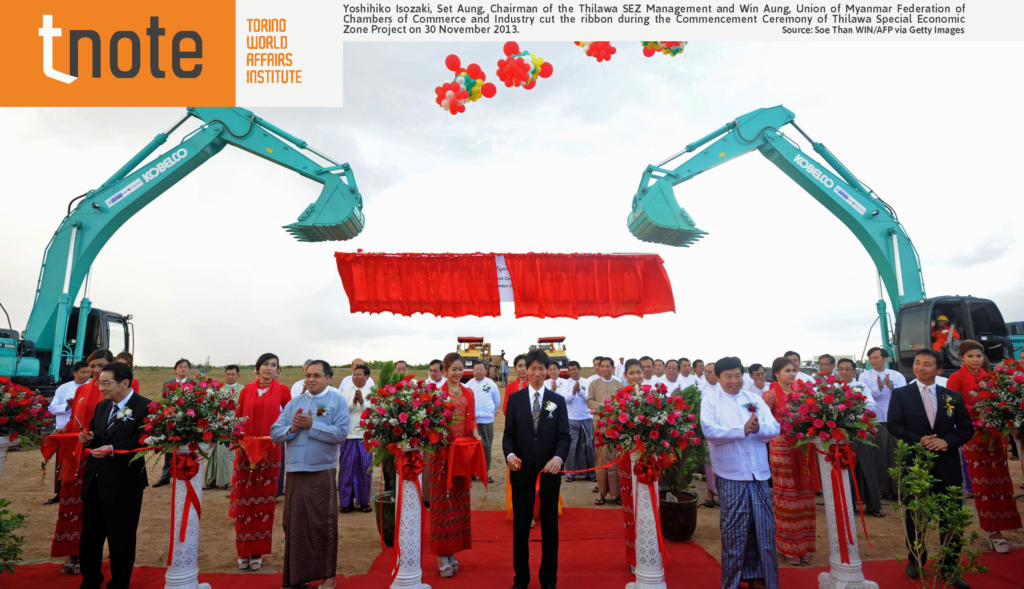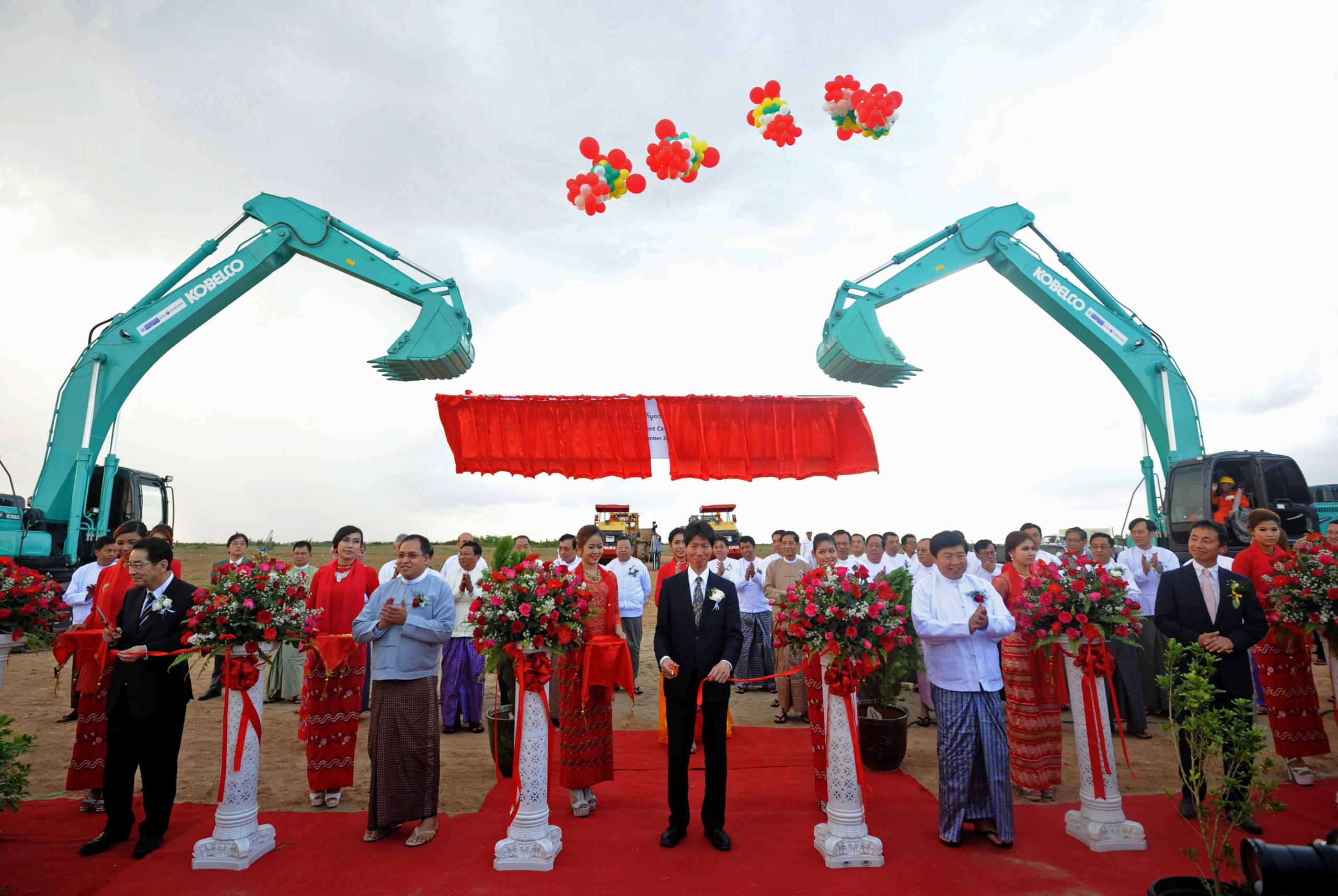
Japan is the only country that can compete with China’s infrastructure diplomacy in Asia today. While often overlooked by Western observers (an oversight that makes Tokyo an ‘underappreciated power’, as Mireya Solís puts it), Japan’s leadership in infrastructure financing in Southeast Asia is grounded in a long history of infrastructural aid to the region. The engineering know-how that underpinned the Japanese empire first morphed, in the early post-war period, into the provision of technical assistance and payment ‘in services’ of Japan’s war reparations, and then into the giant Official Development Assistance (ODA) apparatus that turned Japan into the world’s largest aid donor throughout the 1990s.
The ‘underappreciation’ of Japan’s presence in Asia is perhaps due to the persistent conceptualization of the country as a ‘developmental state abroad’: an economic power with a transactional view of foreign policy, set to reproduce the corporatism of ‘Japan Inc.’ overseas. Japan’s rise to ‘aid great power’ status was indisputably informed by its own developmental state model, allowing some of its idiosyncrasies, such as a reliance on public–private partnerships (PPP) or a preference for large-scale infrastructural projects, to shape aid practices. Indeed, Japanese ODA has been criticized for contributing to authoritarianism, social disruption and environmental destruction in developing countries, and characterized as ‘tarenagashi’ (literally, ‘incontinence’): the lump-sum disbursement of aid with little consideration for human rights or any potentially damaging impacts. Infrastructural aid in particular has often resulted in ‘white elephants’: large-scale projects built through ‘tied aid’ formulas with little positive effect on the living standards of the local populations.
The most successful attempt to refurbish Japan’s image as an aid donor came with Ogata Sadako’s presidency of the Japan International Cooperation Agency (JICA) from October 2003 to 2012. Her sweeping reforms, known as the ‘Ogata shock’, were intended to steer ODA policy towards the concept of ‘human security’ (over which Japan proudly claimed intellectual paternity and financial sponsorship within the UN), and thus to set poverty reduction as the ultimate objective of Japan’s 2003 ODA Charter. This was nothing short of an ideological attack on the belief, held in Japanese traditional international cooperation circles, that poverty reduction could not be a primary policy goal in itself, being only a collateral effect of industrial growth and infrastructural development.

Yoshihiko Isozaki, Set Aung, Chairman of the Thilawa SEZ Management and Win Aung, Union of Myanmar Federation of Chambers of Commerce and Industry cut the ribbon during the Commencement Ceremony of Thilawa Special Economic Zone Project on 30 November 2013. Source: Soe Than WIN/AFP via Getty Images
This tension between ‘developmental’ aid (prioritizing large-scale infrastructure, PPPs and a top-down, state-centric approach to ODA) and the Ogata shock legacy (promoting a bottom-up, grassroots-oriented approach according to the principle of ‘field-ism’ or genba shugi) served as the backdrop to Abe Shinzō’s rise to the premiership in 2012 – just as China’s Belt and Road Initiative (BRI) was gaining ground in Southeast Asia. Revitalizing diplomatic and economic relations with the region became a pressing concern for Abe, who inaugurated the Free and Open Indo-Pacific strategic framework in May 2016. The strategic legacy of the Abe administration for Japanese foreign policy has been amply acknowledged; however, less attention has been paid to his approach to ODA policy.
On the surface, Abe’s preference for a traditional ‘developmental’ model is evident. The 2015 ODA Charter almost entirely replaced the buzzword of ‘human security’ with the Abe Doctrine mantra of ‘national security’ and set as its new guiding principle ‘high-quality growth and poverty reduction achieved through it’ (italics added), setting aside Ogata’s preoccupation with poverty reduction. The launch in 2015 of the Partnership for Quality Infrastructure, promising to deliver ‘high-quality infrastructure’ in support of Japan’s connectivity projects in the Mekong region, seemed to confirm Abe’s disavowal of the Ogata playbook.
Casting Abe’s reforms as a mere regression to the ODA policy of the 1970s–1980s, however, misses part of the picture. During his administration – and, most likely, that of his successor, Suga Yoshihide – ODA has emerged as a new tool to exert geopolitical influence. By harnessing the ‘anti-Ogata’, developmental aid tradition, Abe reshaped ODA policy in function of the new strategic imperatives of Sino-Japanese infrastructure competition in Southeast Asia. Therefore, Abe opened up a ‘third way’ for Japanese ODA, based on what I would describe as the principle of ‘infrastructural means for strategic ends’ (echoing Saori N. Katada’s analysis of Abe’s ‘hybrid’ approach to Japan’s regional foreign policy).
Myanmar’s location makes it a focal point of Sino-Japanese strategic competition in continental Southeast Asia, which can be roughly conceptualized as developing through connectivity projects that follow an east–west axis for Tokyo and a north–south axis for Beijing. On top of its diplomatic history of reliance on Japan and distrust of neighbouring China, the democratic experiment in Myanmar – abruptly stalled by the military takeover of 1 February 2021 – opened up new venues for Tokyo’s presence in the region, to the point that Myanmar is commonly dubbed the ‘last frontier’ of Japanese investments in Asia. Japan has indeed taken up a paramount role in restructuring Myanmar’s economy and financial system. From 2012 to 2015, Tokyo waived most of the debt owed to it by Myanmar (JPY 303 billion), provided an extra JPY 200 billion bridge loan to allow Myanmar to clear its arrears with the ADB and the World Bank, and oversaw the establishment of the Yangon Stock Exchange. Additionally, the Abe administration was instrumental in the development of the Special Economic Zone (SEZ) of Thilawa, located 23 km from Yangon and 150 km from Moulmein, the western terminal of the East–West Economic Corridor. Thilawa is one of the two largest special economic zones established by the Burmese government since 2012 in the form of joint ventures with foreign governments: through a consortium involving the Mitsubishi, Marubeni and Sumitomo corporations, as well as JICA, Japan controls 49% of the SEZ.
Thilawa SEZ epitomizes the essence of Japan’s new ‘infrastructural means for strategic ends’ approach, inaugurated by Abe. It presents all the features of a classic, ‘developmental-style’ ODA project: a top-down, government-led initiative; a PPP with companies traditionally involved in infrastructural projects in Southeast Asia; a focus on the export-led manufacturing sector; and, last but not least, little concern for ‘human security’ (as shown by land-grabbing episodes during its construction). Its function, however, is undeniably strategic too: it suffices to say that the only other large SEZ in Myanmar, Kyaukpyu, in the western Rakhine state, is managed as a joint venture with China.
While currently anchored in infrastructure diplomacy and SEZ development, Sino-Japanese developmental competition in Myanmar has even given signs of potentially spilling over into other realms, as suggested by the unprecedented interest that both Tokyo and Beijing have shown in Myanmar’s – now more fragile than ever – domestic peace process. In 2013, Japan’s Ministry of Foreign Affairs appointed influential philanthropist Sasakawa Yōhei as Special Envoy for National Reconciliation in Myanmar. In 2015, China followed suit by appointing a seasoned diplomat, Sun Guoxiang, as Special Envoy for Asian Affairs, with a specific mandate of supporting the national peace process in Myanmar.
It remains to be seen whether the strategic approach to ODA inaugurated by Abe will be successful in counterbalancing China in Southeast Asia, considering Beijing’s much greater diplomatic and economic leverage. The recent political developments in Myanmar also cast new doubts over the sustainability of Japanese investments in the country – within and without Thilawa SEZ – as Japan’s Ministry of Foreign Affairs announced on 25 February the suspension of all new ODA projects in Myanmar. This policy course (which Tokyo had already pursued in 2014 in response to the military coup in neighbouring Thailand) highlights Japan’s unique position vis à vis Naypyidaw as the only G7 country capable of effectively pressuring the junta without relying on sanctions, leveraging instead on the Burmese military’s own strategic fears: if the void left by missed Japanese investments is filled by China, the Tatmadaw would risk sliding into Beijing’s embrace.
Author
Giulia Garbagni is a PhD candidate in Japanese Studies at the Faculty of Asian and Middle Eastern Studies, University of Cambridge.
Download


Copyright © 2024. Torino World Affairs Institute All rights reserved
